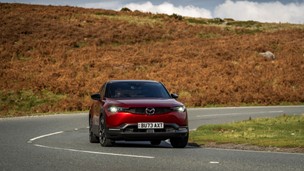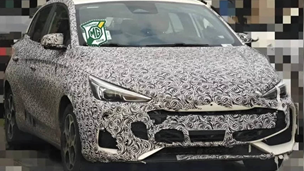Modified cars on the roads are a fairly common sight; every driver will have spotted a car with some sort of custom features, whether it’s an aftermarket exhaust or full-blown chav chariot bodykit.
As long as there have been cars, there have been all manner of enthusiasts willing to chop, mod and hot-rod them. While it really took off in the 1950s, in reality people had been fitting all manner of aftermarket parts to their cars long before then.
In fact, there are actually examples of early cars from the late 1800s that drivers had fitted things like toilets in place of seats to. Of course, while most are happy to stick with a factory-fitted car, there’s always going to be those who take things one step too far.
From huge wheels to insane body designs and even farmyard animals, if you thought your local boy racer with his lowered Vauxhall Nova was bad, check these monsters out!
Donks
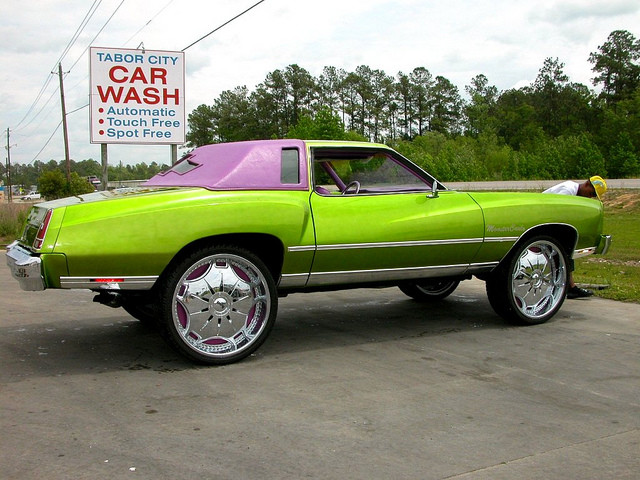
Otherwise known as hi-risers, boxes and bubbles, a Donk is usually characterised by its ridiculously huge wheels and a paintjob so bright you’ll have to wear Factor 50 just to stand next to it.
If nobody has filmed a rap video in your area recently, you’ll probably be largely unfamiliar with what a Donk is, but they’re extremely popular in certain areas of the US, particularly in the South.
Taking the American ethos of ‘bigger is better’ to the absolute extreme, Donks are almost exclusively built on the body of big, old American cars like Cadillacs, then outfitted with a flashy finish and huge wheels.
Donk culture actually started in the 1990s as a form of showing off your perceived wealth. If you made a lot of money, you could afford big 20-inch rims for your car. Unfortunately, this soon escalated into an extreme example of one-upmanship as drivers increased their wheel size until Donks are now regularly seen with gigantic 40-inch wheels.
Neither safe, performance enhancing nor particularly popular with authorities, Donks also tend to attract disparaging remarks from car fans, who tend to see them as sacrilegious to the classics on which they’re built. Still, if it’s attention you’re looking for and you aren’t too fussed whether it’s good or bad, you’ll find it in spades with a Donk.
Raggare
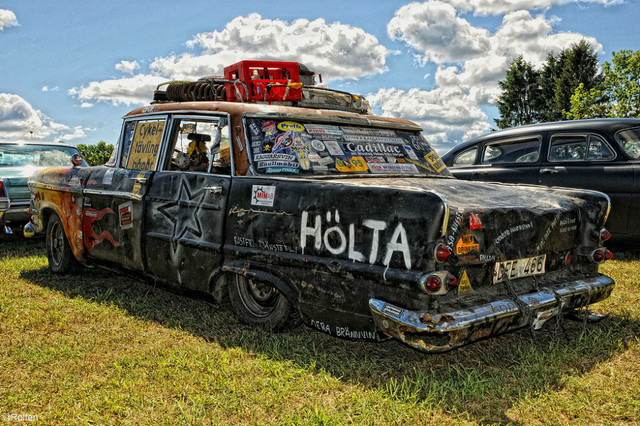
The unique little subculture that is Raggare is all about being as much of an all-American good ol’ boy as possible. Despite the fact that Raggare is primarily based in Sweden, that is.
It got its start in the 1950s as greaser culture migrated to Scandinavia, and as a result, Raggare is most associated with ratty muscle cars, rock and roll, lots of beer and Confederate flag decals.
If you can’t afford a Camaro or a Mustang, don’t sweat it. Luckily, the Swedes are pretty forgiving, so you’ll be just as accepted if you buy an old Volvo and spray-paint a skull and crossbones on it.
Uprate your engine until it’s worthy of muscle car status, lower the car as close to the ground as it’ll physically go, and then grab a beer and you’re ready to go!
Spinners
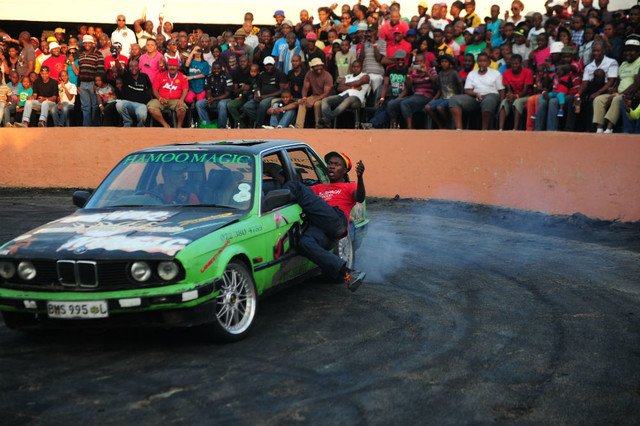
From the Southern state of America to the frozen north of Sweden and back down again, the sport of spinning has become the latest craze in South Africa and lends new meaning to the phrase ‘burning rubber’.
Cheating not only death, but apparently the laws of physics themselves, spinners perform a number of tight manoeuvres to get their car to drift in circles. Once enough momentum has built up, the driver casually steps out of the car and jigs around it while the car spins around them, completely driverless.
After that, the driver will then jump on the bonnet, run across the roof and jump off the other end before diving back in to take control, all in once smooth motion while the car spins on and on.
Though it’s become a legal spectator sport in the last few years, spinning started during the 90s as a gangster ritual in the townships of South Africa. When a local gangster was killed, his friends would steal a car, drift it around his funeral and then set it ablaze as a sign of respect.
Bosozoku
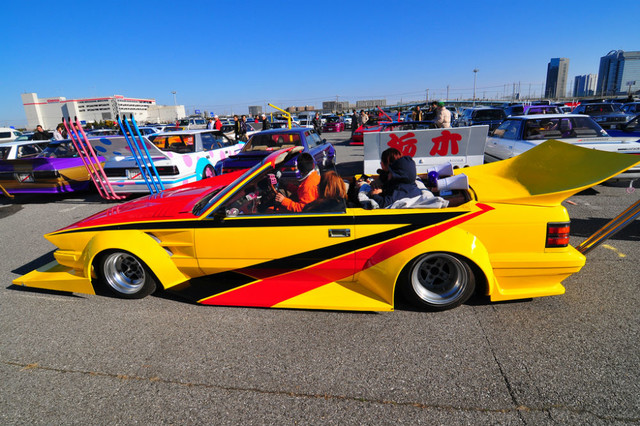
‘Bosozoku’ literally translates as ‘running out-of-control’, and it’s easy to see how the word has become applied to Japan’s most bizarre car culture.
The idea behind making a bosozoku car is to add an aerodynamic kit that’s as large as the vehicle can handle, plus massive exhaust pipes, bright paintjobs, mirrors, discoballs, decals and anything else that’ll make it stand out from the crowd.
Styled on Group 5 Special Production Cars from the 70s, bosozoku cars also feature huge splitters, boxy wheel arches and paintjobs often inspired by comic book heroes or other pop culture icons.
Much like spinning, bosozoku originally had its origins among gang culture and shares a name with a similar motorcycle subculture, which has influenced the design of the cars and vice versa.
Some of the shared influences include the exhaust pipes, which often stretch outwards and up into the air in emulation of the chopper motorcycles used by the gangs who originally gave rise to the bosozoku scene.
Pig n’ Ford racing
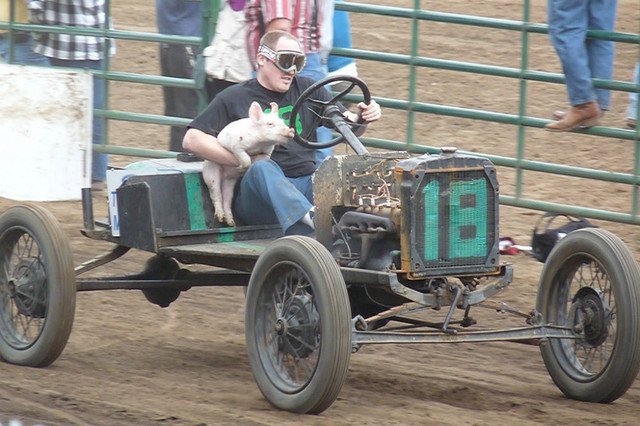
Like Ronseal, Pig n’ Ford racing does exactly what it says on the tin. You get an old Ford, pick up a pig as a co-driver and race.
Originating at the Tillamook County Fair in Oregon, the very first Pig n’ Ford race held over ninety years ago and has since risen to become incredibly popular in the area, filling the Averill Arena where the fair is held to capacity every year.
As the story goes, the race was started by two local farmers who were chasing a runaway pig in their old Ford car. Having decided that it was so much fun, they decided to create a race at the next county fair, which has lasted ever since.
Racers use old Ford Model T cars, which are stripped of all unnecessary parts, but vitally left with the stock engine, and line up on the side of the horse track at the Arena. Drivers must run around for one lap and pick up a live pig before hopping in their cars and driving for another lap.
Picking up more pigs along the way, the racer who completes a full three laps without dropping their pigs first is named the winner.
Bernie, if you’re reading this, we think we might have found a way to make F1 more interesting…


